- Overview
- EcoDevo - Biol 4370
- Evolution - Biol 3306
- Scientific Communication - Biol 6312
- Biology & Biochemistry Undergraduate Research Training (BURT) Program & Course (BIOL/BCHS 3396 & 4396; AKA Senior Research Project)
- Major Interest Group (IDNS 2197)
- (Award Winning!) GalapaGo! Research-Based Learning Abroad Program & Preparatory Course
- The Evolution and Development of Polyphenisms
- STEM Careers Seminar: And you may ask yourself, how did I get here?
- Houston Zoo Paid Summer Internship
Navigating the Many Roads to Success in the Sciences |
 |
A liberal arts degree that emphasizes hands-on training in the life sciences or other STEM (Science, Technology, Engineering & Mathematics) disciplines can serve as the foundation for a diversity of rewarding careers. The path each student takes entails many opportunities and choices; there is no singular route to success. We have invited speakers to talk about how they moved through their professional lives, starting with undergraduate study to eventually land a career in a STEM field. These informal talks will focus on how chance, preparation, work and fun interacted to bring them to where they are today. Each will talk about what they think they did right, what they might have done not so right, their current work and their plans for the future. Below, each of the speakers provides a brief profile and a link to their homepage. Talks start at 1pm in CBB, room 118
Seminar Archive:
These People Chose a STEM Career -
What Happened Next Will Astound You
Dr. Amy Sater - 27 February
Vertebrate Development, Neural Induction and Cell Signaling / Biology & Biochemistry [CMB] poster
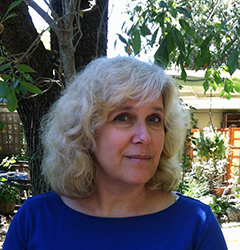 Dr. Sater did her undergraduate work at the University of California, Santa Cruz; a spring term doing research at the Bodega Marine Laboratory led to her ongoing fascination with life cycles and developmental biology. She also did a research project on Drosophila embryonic development as an undergraduate. She went on to earn a M.S. degree at Stanford, and a Ph.D. at the University of Texas at Austin, studying the formation of the vertebrate heart and spending as many summers as possible at the Marine Biological Laboratory [MBL] at Wood’s Hole, MA. As a postdoctoral researcher at the University of California at Berkeley, she began her studies on the initiation of neural development in embryos of the amphibian Xenopus, which she has continued as a faculty member at the University of Houston. Although much of her work has focused on how signaling between cells regulates cell fate in developing embryos, she has also contributed to large-scale collaborative efforts to sequence and assemble the Xenopus genome. She is now investigating diverse roles for microRNAs in the regulation of early neural and eye development, combining molecular, embryological, biochemical, and genomic approaches to identify genes that are regulated by microRNAs, and understand how microRNAs function in early neural tissues. Each year, she teaches a senior-level undergraduate course in Developmental Biology, as well as a graduate course in Cell Biology. She also directed the short course on “Cell and Developmental Biology of Xenopus” at Cold Spring Harbor Laboratory on Long Island for several years. She mentors both graduate students and undergraduates in her research program, and is always happy to schedule a time for students to look at embryos under a microscope and talk about developmental biology. She still returns to the MBL at Woods Hole every year or two.
Dr. Sater did her undergraduate work at the University of California, Santa Cruz; a spring term doing research at the Bodega Marine Laboratory led to her ongoing fascination with life cycles and developmental biology. She also did a research project on Drosophila embryonic development as an undergraduate. She went on to earn a M.S. degree at Stanford, and a Ph.D. at the University of Texas at Austin, studying the formation of the vertebrate heart and spending as many summers as possible at the Marine Biological Laboratory [MBL] at Wood’s Hole, MA. As a postdoctoral researcher at the University of California at Berkeley, she began her studies on the initiation of neural development in embryos of the amphibian Xenopus, which she has continued as a faculty member at the University of Houston. Although much of her work has focused on how signaling between cells regulates cell fate in developing embryos, she has also contributed to large-scale collaborative efforts to sequence and assemble the Xenopus genome. She is now investigating diverse roles for microRNAs in the regulation of early neural and eye development, combining molecular, embryological, biochemical, and genomic approaches to identify genes that are regulated by microRNAs, and understand how microRNAs function in early neural tissues. Each year, she teaches a senior-level undergraduate course in Developmental Biology, as well as a graduate course in Cell Biology. She also directed the short course on “Cell and Developmental Biology of Xenopus” at Cold Spring Harbor Laboratory on Long Island for several years. She mentors both graduate students and undergraduates in her research program, and is always happy to schedule a time for students to look at embryos under a microscope and talk about developmental biology. She still returns to the MBL at Woods Hole every year or two.
Some short films of Xenopus development are here, with one below for fun.
Dr. Jason Eriksen - 6 March
Chemical and physical basis of neurodegenerative disease / College of Pharmacy & the Biology of Behavior Institute poster
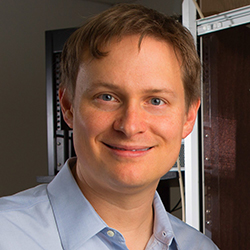 Dr. Eriksen spent his formative years as an undergraduate at Wake Forest University in Winston-Salem, North Carolina, where he double majored in English and Biology. Although he initially intended to pursue a career as a writer, his interest in pursuing biology was kindled after spending the summer after his sophomore year at the Beaufort Marine lab at Duke University. When he return to Wake, he worked as a volunteer on the neurobiology of chemosensory signaling. He went on to earn his doctorate at Loyola University Chicago in developmental neuroscience. As a postdoctoral researcher at the Mayo Clinic, Dr. Eriksen worked on the opposite end of the developmental spectrum studying diseases, such as Alzheimer’s and Parkinson’s, of the aging nervous system. During his time at the Mayo Clinic, Dr. Eriksen discovered a drug that was eventually tested in more than 6000 patients, in the largest-ever clinical trial for the treatment of Alzheimer’s disease. He was recruited by the University of Houston in 2008. Dr. Eriksen’s current research program examines molecular targets, interventions, therapies and diagnostics for neurodegenerative diseases; he is also the founder of Alzeca Biosciences, an early stage biotechnology company for the diagnosis of Alzheimer’s disease. He greatly enjoys working with undergraduate and graduate students.
Dr. Eriksen spent his formative years as an undergraduate at Wake Forest University in Winston-Salem, North Carolina, where he double majored in English and Biology. Although he initially intended to pursue a career as a writer, his interest in pursuing biology was kindled after spending the summer after his sophomore year at the Beaufort Marine lab at Duke University. When he return to Wake, he worked as a volunteer on the neurobiology of chemosensory signaling. He went on to earn his doctorate at Loyola University Chicago in developmental neuroscience. As a postdoctoral researcher at the Mayo Clinic, Dr. Eriksen worked on the opposite end of the developmental spectrum studying diseases, such as Alzheimer’s and Parkinson’s, of the aging nervous system. During his time at the Mayo Clinic, Dr. Eriksen discovered a drug that was eventually tested in more than 6000 patients, in the largest-ever clinical trial for the treatment of Alzheimer’s disease. He was recruited by the University of Houston in 2008. Dr. Eriksen’s current research program examines molecular targets, interventions, therapies and diagnostics for neurodegenerative diseases; he is also the founder of Alzeca Biosciences, an early stage biotechnology company for the diagnosis of Alzheimer’s disease. He greatly enjoys working with undergraduate and graduate students.
Dr. Erin Kelleher - 27 March
Evolution and genomics / Biology & Biochemistry [CMB] poster
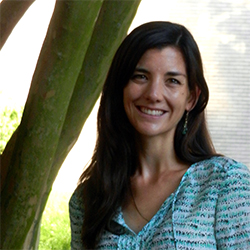 Dr. Kelleher became interested in the in life sciences in high school and completed a B.S. in Biology and a B.A. in Archaeology at the University of Virginia. After considering careers in medicine, patent law, and physical anthropology, she became interested evolutionary genetics after she enrolled in “ecological and evolutionary genetics” during her final semester as an undergraduate. After graduation, Dr. Kelleher worked as a lab technician at the University of Maryland researching sexual selection and speciation on stalk eyed flies while she prepared her applications for graduate school. Dr. Kelleher went on to pursue a Ph.D. in Ecology and Evolutionary Biology at the University of Arizona. Her doctoral research examined the coevolution of proteins in male ejaculates and female reproductive tracts that mediate insemination and fertilization in cactus breeding fruit flies. Dr. Kelleher went on to pursue post-doctoral studies in the Department of Molecular Biology and Genetics at Cornell University, where she studied coevolution between selfish transposable elements and host regulatory machinery in the genetic model fruit fly Drosophila melanogaster. She joined the faculty at the University of Houston in 2013, where she continues to study coevolution between male and female reproductive proteins, as well as between transposable elements and their host genomes.
Dr. Kelleher became interested in the in life sciences in high school and completed a B.S. in Biology and a B.A. in Archaeology at the University of Virginia. After considering careers in medicine, patent law, and physical anthropology, she became interested evolutionary genetics after she enrolled in “ecological and evolutionary genetics” during her final semester as an undergraduate. After graduation, Dr. Kelleher worked as a lab technician at the University of Maryland researching sexual selection and speciation on stalk eyed flies while she prepared her applications for graduate school. Dr. Kelleher went on to pursue a Ph.D. in Ecology and Evolutionary Biology at the University of Arizona. Her doctoral research examined the coevolution of proteins in male ejaculates and female reproductive tracts that mediate insemination and fertilization in cactus breeding fruit flies. Dr. Kelleher went on to pursue post-doctoral studies in the Department of Molecular Biology and Genetics at Cornell University, where she studied coevolution between selfish transposable elements and host regulatory machinery in the genetic model fruit fly Drosophila melanogaster. She joined the faculty at the University of Houston in 2013, where she continues to study coevolution between male and female reproductive proteins, as well as between transposable elements and their host genomes.
Dr. Gregg Roman - 3 April
Genetics of behavior and learning / Biology & Biochemistry [CMB and Director of the Biology of Behavior Institute] poster
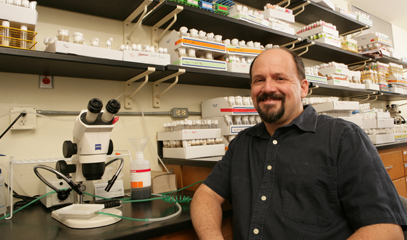
Dr. Roman earned a B.S. in Biology from the University of New Hampshire. He began his studies at the University of New Hampshire interested in becoming a science writer. This choice was inspired by Stephen J. Gould, who used to write essays on evolution in Natural History Magazine entitled “This View of Life” (a primitive blog). In college, Dr. Roman learned that Stephen J. Gould was actually a professor of evolutionary biology, which led him to consider a career in academic research. Dr. Roman became very interested in how plants adapt to changes in their environment. He stayed at the University of New Hampshire and received an M.S. in maize genetics. He then received his Ph.D. from the University of Pennsylvania, studying stress signaling pathways in the simple plant Arabidopsis thaliana. After completing his doctoral work, Dr. Roman decided to work on behavioral mechanisms that animals use to adapt to changes in their environment. He moved to Baylor College of Medicine first as a postdoctoral fellow and then as an assistant professor. At Baylor College of Medicine, Dr. Roman began a research program where he examined the molecular and neural mechanisms of classical conditioning, exploration, and ethanol tolerance formation in Drosophila melanogaster. He joined the University of Houston in 2005, and continues to study the molecular and cellular mechanisms of behavior and training undergraduates, graduate students and postdocs. Many of these train through the Biology of Behavior Institute [BoBI] at UH, at which Dr. Roman serves as director.
Interested parties may wish to see these papers for an introduction to Drosophila genetics: Roman 2004, and Rodyn and Rothenfluh 2010.
Dr. Stuart Dryer - 10 April
Ion Channel Modulation, Renal (Dys)Function / Biology & Biochemistry [CMB] poster
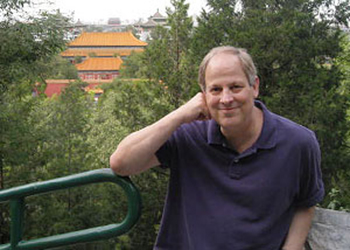 Stuart Dryer received his BA in Biochemistry from the University of Iowa, and as an undergraduate did research in pharmacology and drug discovery. He has remained interested in that subject ever since. He earned his Ph.D. in Pharmacology from St. Louis university, where he worked on the mechanisms of synaptic transmission in autonomic ganglia. He carried out postdoctoral studies in the Department of Physiology at the University of Colorado in Denver, where he began studying ion channels using newly developed patch clamp recording techniques, and he discovered a new type of neuronal channel. Dr. Dryer has worked on a very wide range of topics, including the mechanisms underlying the acquisition of excitable membrane properties in developing neurons and the mechanisms whereby circadian oscillators control sensory systems. The overlying thread that connected all of that research was the long-term modulation of ion channels, especially the mechanisms that controlled their trafficking to the cell surface. This was done in faculty positions at Florida State University (1988-1997), a sabbatical leave at Harvard Medical School (1995-1996), and as a faculty member at the University of Houston (since 1997). Starting around 2007, his research moved in a very different direction and began to focus on the mechanisms that modulate glomerular filtration in the kidney, and the pathophysiological aspects of chronic kidney diseases, including diabetic nephropathy and focal and segmental glomerulosclerosis. This research is based partly on the observation that certain receptors and channels, previously thought to be primarily relevant to the function of neurons and other excitable cells, are also expressed in podocytes, a non-excitable cells that form the glomerular filtration barrier. These include TRPC6 channels, BK channels, and NMDA receptors. His current research examines the roles of these proteins in renal function and dysfunction, and as potential targets for therapy of chronic kidney diseases. Dr. Dryer teaches an honors section of Human Physiology in most semesters. He has won both research and teaching excellence awards at the University of Houston, and served as Chair of the Department of Biology and Biochemistry from 2002-2010.
Stuart Dryer received his BA in Biochemistry from the University of Iowa, and as an undergraduate did research in pharmacology and drug discovery. He has remained interested in that subject ever since. He earned his Ph.D. in Pharmacology from St. Louis university, where he worked on the mechanisms of synaptic transmission in autonomic ganglia. He carried out postdoctoral studies in the Department of Physiology at the University of Colorado in Denver, where he began studying ion channels using newly developed patch clamp recording techniques, and he discovered a new type of neuronal channel. Dr. Dryer has worked on a very wide range of topics, including the mechanisms underlying the acquisition of excitable membrane properties in developing neurons and the mechanisms whereby circadian oscillators control sensory systems. The overlying thread that connected all of that research was the long-term modulation of ion channels, especially the mechanisms that controlled their trafficking to the cell surface. This was done in faculty positions at Florida State University (1988-1997), a sabbatical leave at Harvard Medical School (1995-1996), and as a faculty member at the University of Houston (since 1997). Starting around 2007, his research moved in a very different direction and began to focus on the mechanisms that modulate glomerular filtration in the kidney, and the pathophysiological aspects of chronic kidney diseases, including diabetic nephropathy and focal and segmental glomerulosclerosis. This research is based partly on the observation that certain receptors and channels, previously thought to be primarily relevant to the function of neurons and other excitable cells, are also expressed in podocytes, a non-excitable cells that form the glomerular filtration barrier. These include TRPC6 channels, BK channels, and NMDA receptors. His current research examines the roles of these proteins in renal function and dysfunction, and as potential targets for therapy of chronic kidney diseases. Dr. Dryer teaches an honors section of Human Physiology in most semesters. He has won both research and teaching excellence awards at the University of Houston, and served as Chair of the Department of Biology and Biochemistry from 2002-2010.
Dr. Steve Penning - 17 April
Community Ecology and Conservation / Biology & Biochemistry [EEB and Biology of Behavior Institute] poster
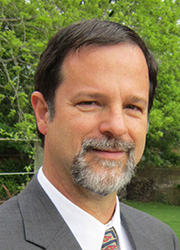 Dr. Pennings earned his bachelor’s degree from Brown University, where he did undergraduate research studying salt marsh ecology. He earned his PhD from the University of California at Santa Barbara, where he tried to get away from the mud, heat and biting insects of the salt marsh by studying interactions between marine seaweeds and the snails that eat them. He did a postdoc at the University of Guam, where he worked in coral reef habitats, studying the chemicals that make seaweeds unpalatable to some consumers. He then obtained a research faculty position at the University of Georgia Marine Institute on Sapelo Island GA, where he returned to the mud, heat and biting insects of the salt marsh, uniting the various threads of his past training by conducting studies of plant-herbivore interactions in salt marshes. He helped start the Georgia Coastal Ecosystems Long-Term Ecological Research program while in Georgia. He moved to the University of Houston in 2002, where he expanded his interests to include plant-herbivore interactions in coastal prairies. His laboratory works in salt marshes, mangroves and coastal prairies, studying plant community ecology, plant-herbivore interactions, and geographic variation in ecological interactions. He is the co-director of the Georgia Coastal Ecosystems Long-Term Ecological Research Program, and director of the University of Houston Coastal Center. The primary courses that he teaches at UH are Ecology (a lecture course) and Biodiversity (a course that emphasizes reading and discussing the literature).
Dr. Pennings earned his bachelor’s degree from Brown University, where he did undergraduate research studying salt marsh ecology. He earned his PhD from the University of California at Santa Barbara, where he tried to get away from the mud, heat and biting insects of the salt marsh by studying interactions between marine seaweeds and the snails that eat them. He did a postdoc at the University of Guam, where he worked in coral reef habitats, studying the chemicals that make seaweeds unpalatable to some consumers. He then obtained a research faculty position at the University of Georgia Marine Institute on Sapelo Island GA, where he returned to the mud, heat and biting insects of the salt marsh, uniting the various threads of his past training by conducting studies of plant-herbivore interactions in salt marshes. He helped start the Georgia Coastal Ecosystems Long-Term Ecological Research program while in Georgia. He moved to the University of Houston in 2002, where he expanded his interests to include plant-herbivore interactions in coastal prairies. His laboratory works in salt marshes, mangroves and coastal prairies, studying plant community ecology, plant-herbivore interactions, and geographic variation in ecological interactions. He is the co-director of the Georgia Coastal Ecosystems Long-Term Ecological Research Program, and director of the University of Houston Coastal Center. The primary courses that he teaches at UH are Ecology (a lecture course) and Biodiversity (a course that emphasizes reading and discussing the literature).
Dr. Leigh Leasure - 24 April
Developmental Cognitive Neuroscience, Binge alcohol damage, Exercise and neuroplasticity / Psychology [Developmental Cognitive Neuroscience, Director of the Behavioral Neuroscience Lab and Biology of Behavior Institute] poster
 Dr. J. Leigh Leasure received her bachelor’s degree from the University of Richmond, with a double major in Biology and Psychology. As an undergraduate, she did research on the neural effects of prenatal stress in rats. Having this research experience made her realize that the brain is the most amazing thing, ever, in the entire history of earth, and that brain research was where she wanted to take her career. So, she went on to graduate school at the University of Texas at Austin in the field of Behavioral Neuroscience. There, she became interested in experience-dependent neural events after brain injury, or, put more simply, how the way an animal (or human) moves and thinks after a brain injury affects the course of recovery. After receiving her Ph.D., Dr. Leasure did a post-doctoral fellowship in Genetics at the Salk Institute for Biological Studies. At Salk, she worked with a consortium of scientists from the Christopher and Dana Reeve Foundation, investigating recovery of function after spinal cord injury. Eager to get back to Texas, Dr. Leasure was happy to accept a job offer from the Psychology Department at the University of Houston. Since coming to UH, Dr. Leasure has been investigating the potential of exercise to heal the injured brain. In her laboratory, she trains undergraduates, graduate students and post docs to do pre-clinical research, using rodent models. She also loves classroom teaching, particularly at the undergraduate level, because undergraduates are inquisitive, insightful and ask the best questions
Dr. J. Leigh Leasure received her bachelor’s degree from the University of Richmond, with a double major in Biology and Psychology. As an undergraduate, she did research on the neural effects of prenatal stress in rats. Having this research experience made her realize that the brain is the most amazing thing, ever, in the entire history of earth, and that brain research was where she wanted to take her career. So, she went on to graduate school at the University of Texas at Austin in the field of Behavioral Neuroscience. There, she became interested in experience-dependent neural events after brain injury, or, put more simply, how the way an animal (or human) moves and thinks after a brain injury affects the course of recovery. After receiving her Ph.D., Dr. Leasure did a post-doctoral fellowship in Genetics at the Salk Institute for Biological Studies. At Salk, she worked with a consortium of scientists from the Christopher and Dana Reeve Foundation, investigating recovery of function after spinal cord injury. Eager to get back to Texas, Dr. Leasure was happy to accept a job offer from the Psychology Department at the University of Houston. Since coming to UH, Dr. Leasure has been investigating the potential of exercise to heal the injured brain. In her laboratory, she trains undergraduates, graduate students and post docs to do pre-clinical research, using rodent models. She also loves classroom teaching, particularly at the undergraduate level, because undergraduates are inquisitive, insightful and ask the best questions